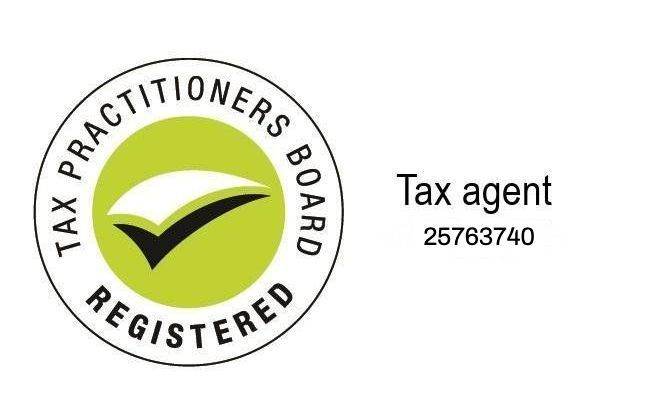What’s new in JobKeeper 2.1?
Vania Wang • September 14, 2020
JobKeeper changes: What’s new in JobKeeper 2.1? "We can help you"
In response to the economic devastation caused by the coronavirus in Victoria, the government has decided to revise the second phase of the JobKeeper programme that was announced on 21 July 2020.
The programme was originally scheduled to complete on 27 September 2020.
JobKeeper 2.1 – The changes
On July 21 2020, the government decided to extend the scheme until 28 March 2021 owing to the ongoing pandemic. On 14 August 2020, the Treasurer announced several updates to the JobKeeper 2.0 programme.
The extension will run for an additional six months, from 28 September 2020 until March 2021. This is further divided into two phases: the first phase is comprised of 7 fortnights and the second phase of 6 fortnights.
Here’s a look at the important changes:
- For the fortnight that commenced on 3 August 2020, the employment date will move from 1 March to 1 July. This new date could be in addition to the 1 March date, which would surely expand eligibility. However, if an employee previously nominated another employer (although no longer employed with them), they will become ineligible. Perhaps this was created to avoid double-dipping, however, this would need further clarification.
- To be eligible for the first extension period, only the September quarter must have suffered a turnover decline of 30% or more.
- To be eligible for the second extension period, only the December quarter must have suffered a turnover decline of 30% or more.
- The two payment rates remain unchanged. However, the higher rate will apply when an employee worked for an average of 20 or more hours in the four weeks of pay periods either before 1 March 2020 or 1 July 2020.
A business may qualify for the first extension period and not the second if the December 2020 quarter turnover didn’t actually decline by 30% or more).
In the same way, if a business did not qualify for the current JobKeeper programme, but is expected to suffer a turnover decline of 30% or more, it can apply for JobKeeper 2.1 if they show an actual decline of 30% or more in the September quarter.
Applying for JobKeeper 2.1
Here’s a look at all the steps you need to take to apply for this business incentive programme:
- Registration – The first step is to register your interest in the scheme. This lets the government know of your intention to participate.
- Employee information – You must provide information about your employees, the number of employees on payroll as of the eligibility date.
- Employee payments – Your employees will receive $1,500 each fortnight under this scheme, which will be subject to PAYG withholding. If an employee’s normal wage is lower than $1,500 a fortnight, it will be “Topped Up” to the sum of $1,500. We’ll help by adding a new payment line in your Quickbooks or Xero accounts to show the top-up amount for the duration of the scheme.
- Employee notification – You must notify all eligible employees that you’ve included them in this scheme.
- Inform the ATO – You must inform the Tax Office on a monthly basis.
We can help
The JobKeeper 2.1 scheme can be a lifesaver in these tough times. However, if applying for this scheme or keeping books becomes cumbersome, we are here to help. The experienced team of professionals at THN & Samios Partner can help maintain your books whilst you are on the JobKeeper 2.1 programme.
Contact us
today for more information.

By Vania Wang
•
January 27, 2025
As a medical professional, your practice isn’t just a business, it’s a platform to provide care, build relationships, and make a difference. Scaling your practice to meet growing demand is exciting, but it also comes with financial challenges. Whether you’re expanding your team, upgrading equipment, or opening a second location, a solid financial strategy is key to sustainable growth.

By Vania Wang
•
January 14, 2025
One of our clients, a cardiologist, came to us feeling frustrated. They were earning a strong income and investing regularly, but their wealth wasn’t growing as fast as they’d hoped. After reviewing their situation, we found several areas for improvement. Their investments were held in their own name, which meant they were paying taxes at the top marginal rate. They were also missing out on key deductions and weren’t using their superannuation accounts to their full potential. We worked together to restructure their finances. By moving their investments into a family trust, they could distribute income to family members on lower tax rates. We also restructured their loans to reduce interest payments, freeing up cash flow for other investments. One of their properties was operating at a loss, but we used negative gearing to offset their taxable income, saving them thousands. Finally, we optimised both their and their spouse’s super accounts, taking advantage of lower tax rates to build long-term wealth. The results were immediate. They now save $10K annually in taxes and have better cash flow, allowing them to invest more effectively. Their assets are also insulated from potential litigation, giving them peace of mind about the future. This is a perfect example of how the right advice can make a world of difference. If you’re feeling stuck or unsure about your financial progress, a specialist accountant can help you unlock new opportunities and achieve your goals faster. You’ve worked hard for your success, it’s time your finances reflected that.

By Vania Wang
•
November 11, 2024
When you’re running a business, having insurance in place often feels like a safety net. You’ve checked the box, paid the premiums, and you can breathe a sigh of relief. But are you truly covered? Many business owners believe they’re protected, only to find gaps in their coverage when it’s too late. It’s not uncommon to assume you’re safeguarded, but the reality is that insurance and asset protection strategies need regular review, especially as your business and personal circumstances change.

By Vania Wang
•
November 1, 2024
You’ve worked hard to build wealth and provide for your family. But when it comes to passing that wealth on, are you aware of the potential tax implications? While Australia doesn’t have a direct inheritance tax, that doesn’t mean your beneficiaries are completely off the hook. There are other taxes that can come into play, especially when it comes to inherited assets or superannuation.

By Vania Wang
•
October 1, 2024
Discover why running a business feels harder than ever and how to regain control of your finances. In this blog, we explore common challenges faced by business owners, from cash flow issues to lost focus, and offer practical solutions to turn things around. Learn how expert financial guidance from THN & Samios Partners can help you overcome obstacles and get back on track.
Contact Info
Address:
Suite 2, Level 29, 259 George St Sydney NSW 2000
Phone:
+61 2 9660 8555
Trading Hours
Monday to Friday 9:30am – 4:00pm
Appointments outside these times are available only by prior
arrangement.
© 2025
THN & Samios Partners Pty Ltd







